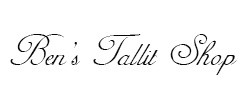Recently a prospective customer sent in a message asking me for my opinion on the question of whether Ptil Tekhelet (i.e. Murex trunculus dye) is the genuine techelet referred to in the Torah. It's a huge question. Who am I to say? For those who have the time, energy and interest to explore the topic, there are endless discussions available online. For example, a very good question-and-answer website run by Jerusalem dayanim under the auspices of the Maane Simcha Foundation has an article arguing against Murex trunculus. Well, not really against, but arguing that it's problematic to consider it genuine techelet.
Just as interesting, and perhaps even more enlightening, were some of the reactions to the argument. I took a quick glance around the website, and it seems that most posts have zero reactions, a few have three or four and this post had 12 at last count. And some of the reactions were nearly article-length! That's the way it always is when you bring up the topic of techelet.
If you have good Hebrew skills, I strongly recommend you take a look for yourself. For those who don't, let me at least present one point brought up in the debate.
The author of the article, Rabbi Shmuel Baruch Ganut, writes, "Imagine there is a certain country somewhere on the globe whose denizens studied the relevant verses and excerpts from the Gemara regarding the form of the etrog. They don’t know what an etrog is, but they know that it’s referred to as pri etz hadar, the flavor of the trunk and the fruit are the same, it forms on the tree over the course of 2-3 years, and when its fruits start to blossom, the fruits from the previous year have not yet fallen from the tree. All of these are signs of the etrog cited in the Gemara.
"Based on those signs, they then proceed to determine what an etrog is. If they have no tradition handed down from their father and grandfather regarding the identity of the etrog, they very well might wind up taking a lemon or orange instead of an etrog. These, and several other citrus fruits, have the same signs which the Gemara points to as signs of the etrog. Were we to rely solely on the indications cited by Chazal, we could come to the first Yom Tov of Sukkot with an orange or tangerine instead of an etrog."
In response, a reader who calls himself HaRav Yoel HaKatan counters that "if they have no knowledge of the possibility this is an etrog, and there’s a reasonable chance that the fruit they found is the true etrog, certainly in light of the doubt that it is they would be obligated (without a bracha) to use a fruit that has ten signs, and to hope that in the near future they will clearly know the truth of the matter! Because of the fear they may be wrong, should they forego the mitzvah entirely?"
 United States Dollar
United States Dollar
 Shekel
Shekel
 Euro
Euro
 British Pound
British Pound
 Australian Dollar
Australian Dollar
 New Zealand Dollar
New Zealand Dollar
 Canadian Dollar
Canadian Dollar
